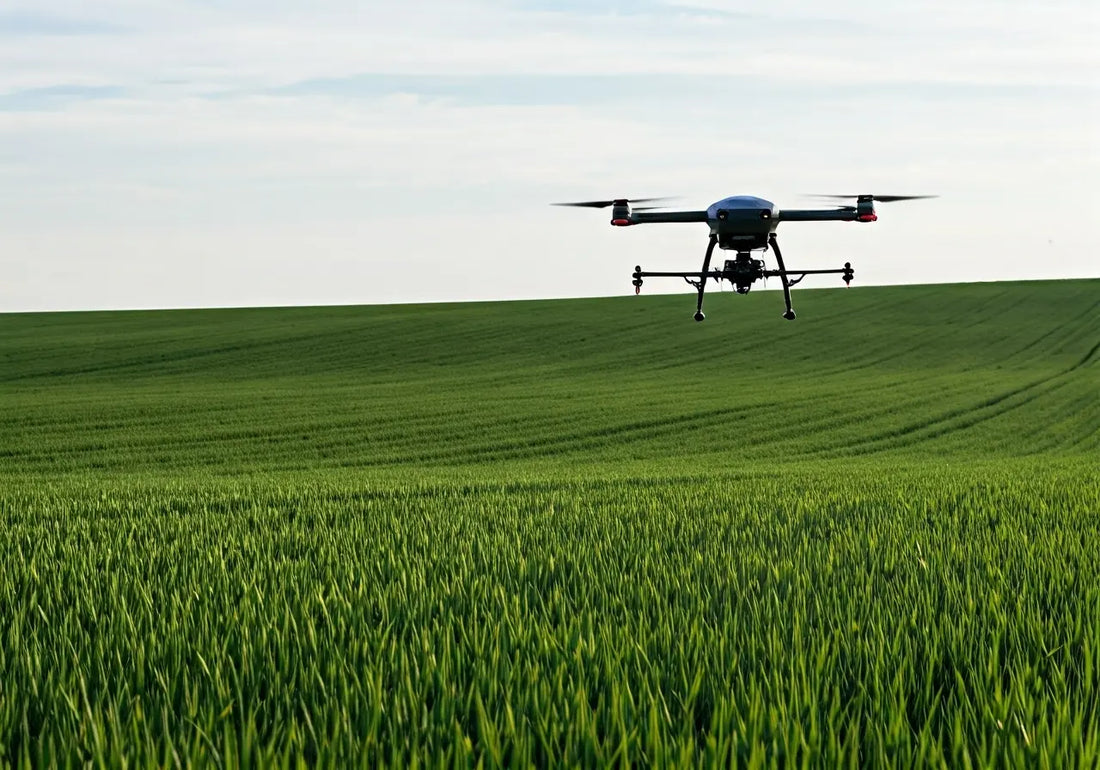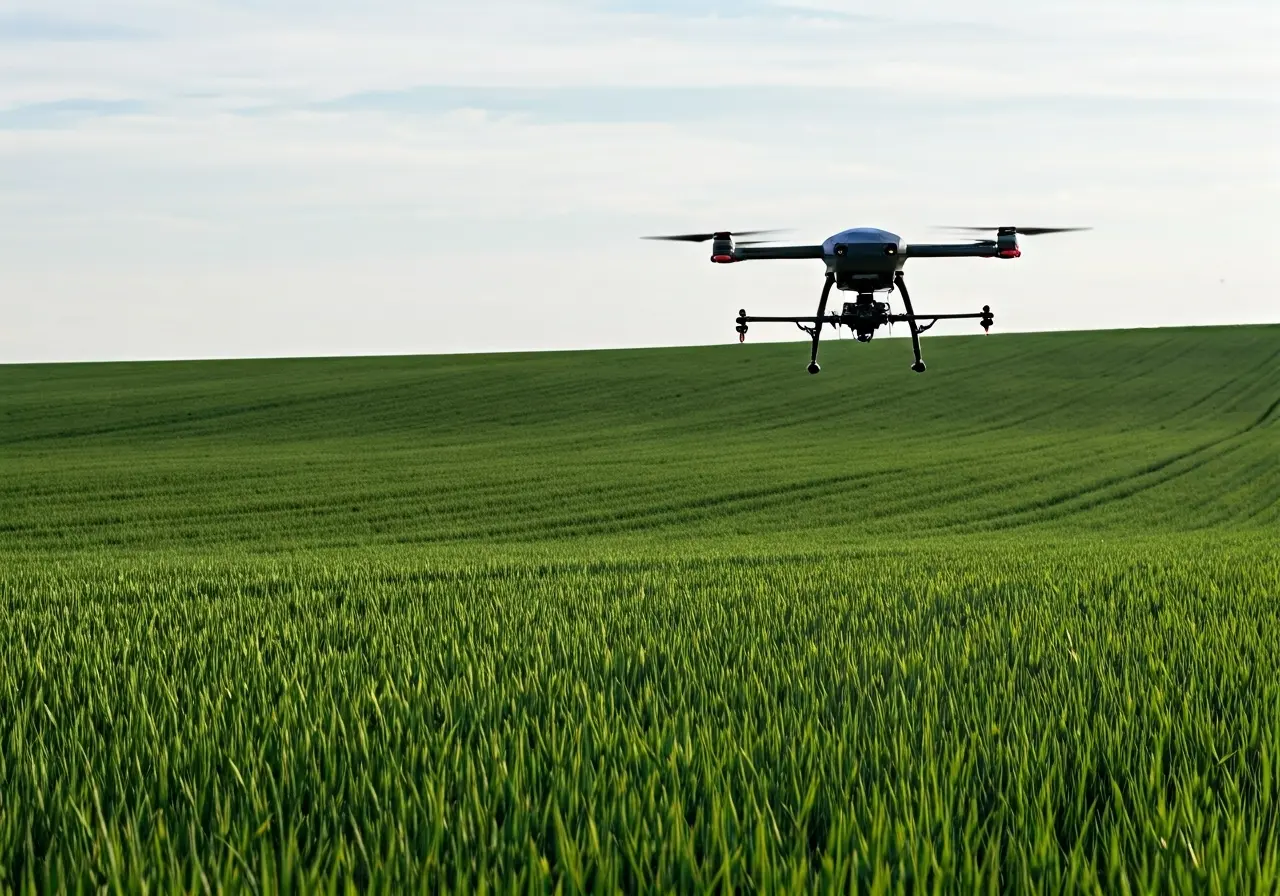
Boosting Farm Efficiency with UAV Crop Spraying
Share
In the ever-evolving world of agriculture, technology plays a crucial role in increasing productivity and efficiency. One such innovation is the use of Unmanned Aerial Vehicles (UAVs) for crop spraying. This method not only streamlines the spraying process but also enhances the precision and impact of farm management. In this blog, we’ll explore how UAV crop spraying can revolutionize traditional farming practices.
The Basics of UAV Crop Spraying
Understanding how UAV crop spraying works is essential for farmers looking to integrate this technology. UAVs are equipped with advanced sensors and GPS technology to ensure accurate applications of pesticides, fertilizers, and other crop treatments. These drones fly over fields, following predetermined paths. The precision of this method reduces waste and ensures even distribution over the crops. By optimizing the amount of chemicals used, UAVs not only cut costs but also lessen the environmental impact, contributing to a more sustainable farming approach.
One of the significant advantages of UAV technology is the ability to easily access hard-to-reach areas. In large fields or rugged terrains, traditional machinery might struggle, but UAVs can navigate effortlessly, ensuring that no part of the field is neglected. This capability is particularly beneficial in regions with uneven landscapes, where traditional equipment may not perform optimally. Additionally, UAVs can be deployed quickly and efficiently, allowing for timely interventions during critical agricultural phases.
Benefits of UAV Crop Spraying
UAV crop spraying offers numerous benefits, including increased efficiency, reduced chemical usage, and minimal soil compaction. This section discusses how UAVs save time and resources while producing healthier crops. With their precision technology, UAVs can apply controlled amounts of fertilizers and pesticides, targeting specific areas rather than blanket spraying. This precision not only reduces waste but also minimizes chemical runoff into surrounding ecosystems, making agriculture more environmentally friendly.
Furthermore, because UAVs are airborne, they eliminate the issue of soil compaction, a common problem with heavy farming equipment. Soil compaction can adversely affect root growth and water absorption, leading to poorer crop yields. By using UAVs, farmers can maintain the natural structure of the soil, promoting healthier crop growth. Additionally, the efficient nature of UAVs means that agricultural inputs are used more effectively, which can lead to significant cost savings over time.
Harnessing the power of UAVs also aligns with the growing movement towards precision agriculture, a practice that aims to optimize field-level management with regard to crop farming. This modern approach leverages data and technology to make informed farming decisions, maximizing output while minimizing input wastage. Understanding and implementing precision agriculture methodologies can transform agricultural productivity in meaningful ways, helping to meet the demands of a growing global population.
Challenges and Considerations
While UAV crop spraying brings many advantages, it also presents challenges such as regulatory hurdles and high initial costs. Farmers must weigh these factors alongside the benefits to determine feasibility for their operations. The regulatory landscape for UAV use in agriculture can be complicated, as different countries have varying rules and requirements. Farmers need to be well-informed about these regulations to ensure compliance and avoid potential legal issues. Furthermore, the initial investment in UAV technology can be substantial, which may be a barrier for small-scale farmers.
Another consideration is the learning curve associated with operating UAV technology. While advancements in technology have made UAVs more user-friendly, operators still need to be trained to handle these sophisticated tools correctly. This training is crucial to optimize the use of UAVs and to ensure safety both in the air and on the ground. Investing in education and training is a necessary step for farmers who want to adopt this technology effectively.
Implementing UAV Technology on Your Farm
For those ready to adopt UAV crop spraying, understanding best practices is key. This section covers steps farmers can take to successfully implement this technology, including training, investment considerations, and ongoing maintenance. First, farmers should research and select UAV models that suit their specific crop needs and farm size. Consulting with experts and other farmers who have experience with UAV technology can provide valuable insights.
It’s also important to establish a maintenance schedule to ensure UAVs remain in optimal working condition. Regular checks and updates to both software and hardware will maximize the lifespan and effectiveness of the drones. By investing in continuous education and staying updated with technological advancements, farmers can maintain a competitive edge in the rapidly evolving agricultural landscape. For more detailed guidance, consider reaching out to UAV specialists or consulting resources that focus on agricultural innovations.
Finally, farmers should consider collaborating with local governmental organizations or agricultural bodies that can provide support and resources for integrating UAV technology. These organizations often have programs or incentives to assist farmers in adopting new technologies, reducing some of the initial financial burdens. Embracing community and governmental support can facilitate a smoother transition to UAV crop spraying.
Embracing the Future of Agriculture
Incorporating UAV crop spraying into farming practices holds great promise for the future of agriculture. By increasing efficiency, reducing environmental impact, and optimizing precision, UAVs offer farmers a powerful tool to enhance productivity and sustainability. As technology continues to advance, embracing these innovations will be key to meeting the growing global food demands while maintaining ecological balance. For more information on how to integrate UAV technology into your agricultural practices, visit the TJ AeroSense homepage.

